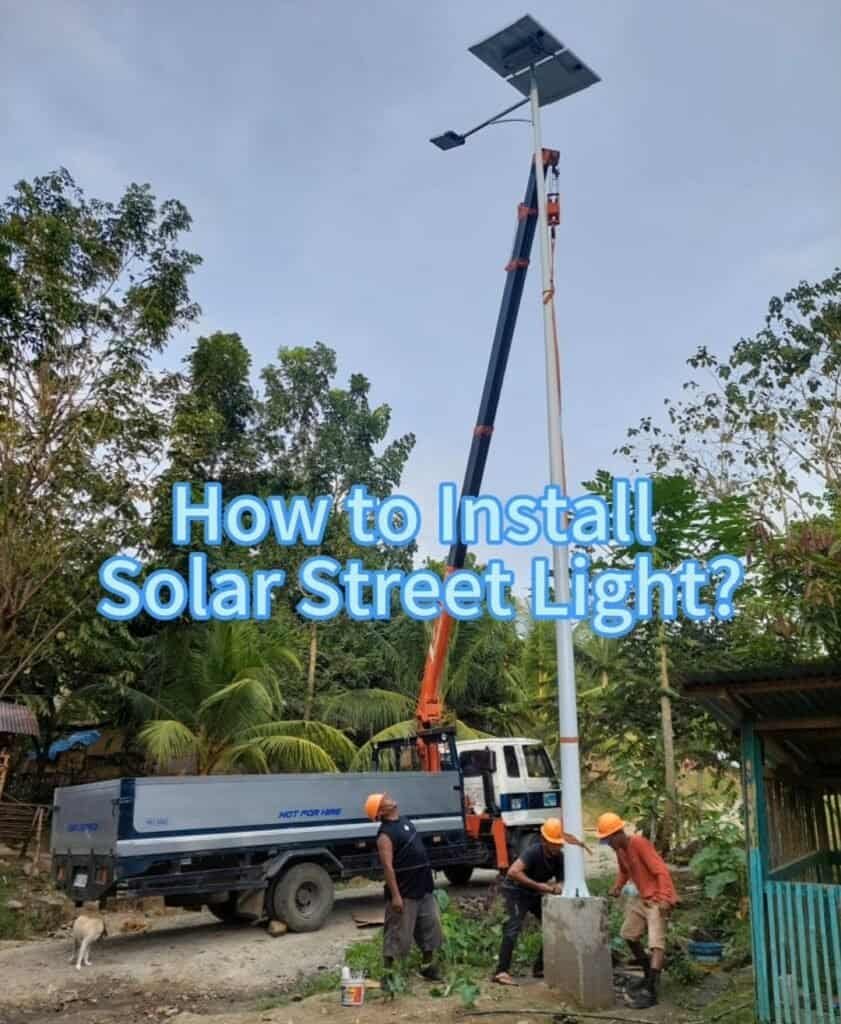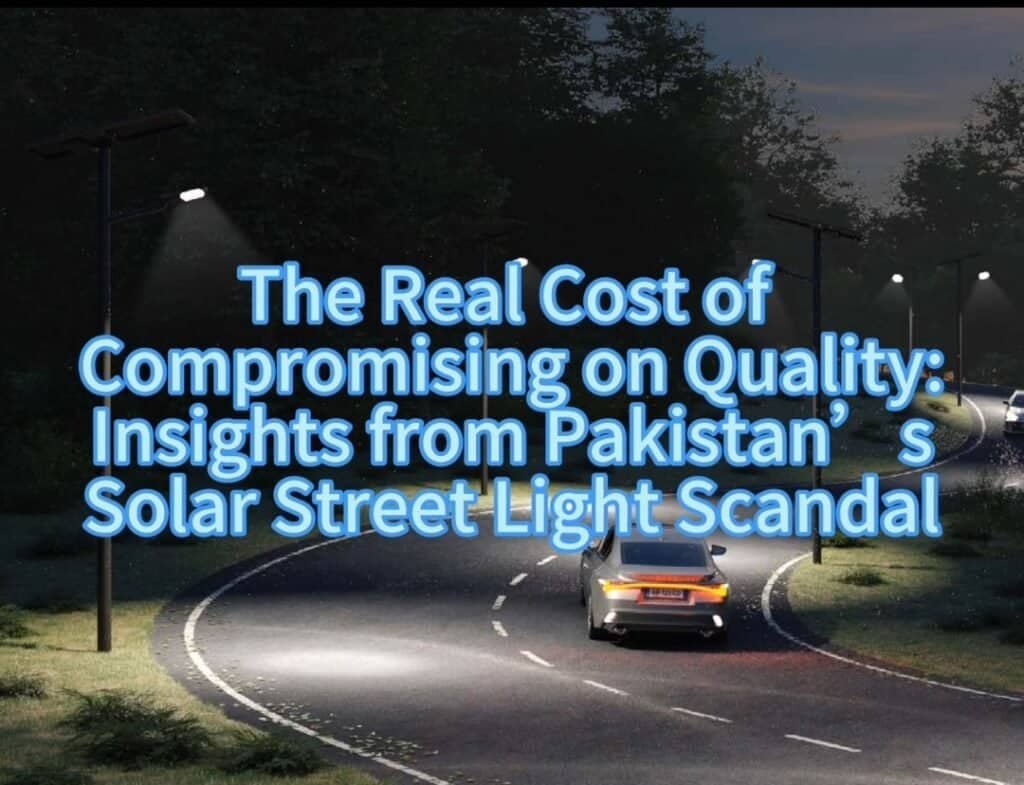How to make solar street lights? When you are searching for the answer to this question, I believe you have a project for solar street lights to illuminate your house, real estate, parking lot, or other applicable areas. Or you might be interested in the production process of solar street lamp manufacturers. Anyway, from this article, you will have a comprehensive understanding of it, and you can even roll up your sleeves to make your own solar lights with our guidance.
As a street light manufacturer, SLD is renowned for manufacturing innovative solar LED street lights. Followingly, I would like to share with you our process for designing, optimizing, and manufacturing solar street lights.
What’s our main objective for developing solar street lights?
There is an objective for any project, the solar street light is not an exception. The main objective for the development of solar street lights is to be a greener, more energy-efficient alternative to traditional street lights, In order to maximize the overall efficiency of solar street lights, each component must maximize energy use and minimize losses.
The latest technologies have made solar street lights more intelligent, practical, attainable, and affordable. You might come up with numerous designs and structures when you think about the solar street light. The basic design is the same, but the styles will differ between the various models of solar street lights. Let’s discuss how to make a simple model of solar street lights.
What are the main components of solar street lights?
The solar street light system is of renewable energy system which uses PV modules to convert sunlight into electricity for the operation of lights. It’s the most functional outdoor lighting system that is programmed to work automatically turn off during the hours of daylight and only operate during the night. To achieve this, there are typically 7 main components that make a complete set of solar street lights:
- Solar panels – also known as solar photovoltaic cells – convert solar energy into electricity.
- Solar charge controller – controlling or regulating the voltage and current coming from PV module going to batteries. And functional prevents battery from over-charging or over-discharging.
- Rechargeable battery – storing electric power for operating lights at night.
- Led Street Lamp – It’s loading, a source of light
- Poles(with or without bracket and lamp arm) –for connecting different components of the solar system and mounting on a raised surface
- Cables- for connecting different components and giving a way for electric current.
- Remote control – for manually turning on/off, managing, and reprogramme the work mode of solar street lights
Solar street lighting technology is a fully competitive area, so the product design is diverse and the components used will vary from manufacturer to manufacturer, so you have a wide range of choices when deciding on a selection and purchase.
Nowadays, off-grid solar lighting is highly intelligent and versatile. It is more automated than traditional streetlights. With the advanced technology of the IoT( It’s shorthand for Internet of Things), some streetlight designs are equipped with IoT smart control systems to facilitate monitoring and wirelessly connecting to the internet. With it, you can easily surveillance and monitor through your personal computer and tablet. While some solar street lights with the function of Bluetooth control, you can easily set the working mode of the light at any time from your cell phone with an APP, instead of setting it through the remote control.
How To Design a solar street light?
Step 1: Determine power consumption demands (WH)
Find out the total power and energy consumption of all loads that need to be supplied by the solar PV system as follows:
1.1 Calculate the total lumen required to illuminate the area,
To get the approximate watt of the led street light bulbs needed, Total Lumen(lm)/160(lm/watt)=Watt.
1.2 Calculate the total Watt-hours per night for each led light used.
To our purpose the work mode is 6hours at 100% +6hours at 50%, then get the work hours at 100% is 9hours.
1.3 Calculate the total Watt-hours per day needed from the PV modules.
The Watt-hours per day times 1.3 (the energy lost in the system) to get the total Watt-hours per day which must be provided by the panels.
Step 2: Size the Solar PV modules(Watt peak)
Watt-hours(WH)/ Peak hour(H)=Watt(H)
Divide the total Watt-hours per night needed from the PV modules by 5.5 (the peak hour in Nigeria) to get the total Watt-peak rating needed for the PV panels needed to operate the led street light fixture. So that to get the total Watt-peak rating needed for PV modules.
Note: The watt peak is dependent on the location of installation, refer to the below world solar radiation chart to get the peak hour:

Step 3: Size the battery(Ah)
The battery should be large enough to store sufficient energy to operate the street lights at night and on cloudy days. To find out the size of the battery(AH), calculate as follows:
3.1 Calculate total Watt-hours per night used by street light. eg. a 30W led light work 12hours each night at mode (6hours 100% +6hours 50%), the Watt-hours is 30*9hours=360WH.
3.2 Divide the total Watt-hours per night used by 0.85 for battery loss.
3.3 Divide the answer obtained in item 3.2 by 0.8 for depth of discharge.
3.4 Divide the answer obtained in item 3.3 by the nominal battery voltage. eg. 3.2V, 12V, 11.1V, 12.8V
3.5 Multiply the answer obtained in item 3.4 with days of autonomy (the number of days that you
need the system to operate when there is no power produced by PV panels) to get the required
Ampere-hour capacity of the deep-cycle battery.
Battery Capacity (Ah) = Total Watt-hours per day used by appliances x Days of autonomy
(0.85 x 0.8 x nominal battery voltage)
Step 4: Size the controller(A)
The solar charge controller is typically rated against Amperage and Voltage capacities. Select the solar charge controller to match the voltage of the PV array and batteries and then identify which type of solar charge controller is right for your street light bulb. Make sure that the solar charge controller has enough capacity to handle the current from the PV panel.
According to standard practice, the sizing of the solar charge controller is to take the short circuit current (Isc) of the PV panel and multiply it by 1.3
Solar charge controller rating = Total short circuit current of PV array x 1.3
How do assemble each component of solar street light?
1. How to assemble a solar panel?
The solar panel modules utilize light energy (photons) from the sun to generate electricity through the photovoltaic effect. Most PV modules consist of crystalline silicon cells or thin-film cells such as CIGS. As crystalline silicon solar cells are rigid and fragile, so need to have structural components with top and back layers to carry them and prevent mechanical damage to the cells. Moreover, solar cells cannot be exposed to moisture, so special laminating machines are required to seal the cells between the material of the top and back layers.
There is a PV junction box attached to the back of the solar panel and serves as its output interface. To prevent short circuits, a resistor is usually soldered between the positive and negative terminals of the junction box. The cables from the junction box are usually connected with MC4 connectors that will be easy for connecting with other components.
The solar panel also uses an aluminum frame consisting of brackets and slotted brackets to better support the panel structure and to facilitate screwing onto the mounting bracket.
2. How to assemble a Battery?
There are typically two types of batteries used in the solar lighting industry, one is lead-acid batteries, and another is lithium batteries. Of those two batteries are deep cycle, and maintenance-free. Lead-acid batteries are mainly used in split-type street lights due to their large size and heavy weight. While the lithium batteries with the same capacity are smaller and lighter weight, so it’s widely used in All-In-One/Two solar street lights.
The lithium battery package used in solar street lights is always assembled by connecting 3.2V or 3.7V battery cells in series and parallel to get the required voltage and capacity. For purpose of protecting the battery from over-discharge or overcharge, the BMS or protection board is needed for each battery pack.
The battery pack is usually placed in a metal case with ventilation holes to prevent the high temperatures from affecting the service life.
3. How to assemble a LED fixture?
Solar-led fixtures are powered by batteries to illuminate and consist mainly of a lamp housing, led module, and lens. There are many lamp housing designs that can be used in led light fixtures, some are decorative and some are modular with heat sinks.
For the split type solar street light, LED luminaires are typically attached to a pole by a light arm and connected to other components by cables. While only a led module is directly attached to the aluminum plate of the All In One solar street light.
How do make the solar street light system more energy-efficient?
1. Components Optimization
In order to make an energy-efficient system and low the investment cost and perfect the performance of street lights. A number of components need to be carefully selected to optimize the whole solar street lighting system.
- Light Source Optimization. To reduce energy consumption, you can use LED lights instead of fluorescent bulbs.
- Battery Optimization. Battery packs should be made with the best storage technology. The most common batteries recommended for solar lighting systems are Li-Ion batteries. In addition, there are other options such as lead-acid and gel-cell batteries.
- Solar Panel Optimization. Choose monocrystalline PV modules as these are more efficient than polycrystalline ones.
- Controller Optimization. Minimize the energy losses in your system by choosing efficient wiring connections. Your controller must be capable of turning on and off your system efficiently.
2. Use of smart sensors
In order to improve the efficiency of the solar lighting system, it can be equipped with smart controllers and motion sensors. PIR(shorthand for Passive infrared) sensors are regularly used to detect motion and control the level of illumination. The common work status is
- The lights brighten up when people come, and lights dim after people leave
- The lights are on when people come, and lights go out when people leave
In addition to PIR motion sensors, there are other types, such as microwave sensors, dual-technology sensors, etc.
3. Monitoring Battery Voltage
In this way, the battery is protected from damage. If there is an overcharge, the battery reduces the flow of energy, while a voltage drop occurs due to a decrease in sunlight intensity or an increase in sudden electrical use, it maintains proper voltage regulation.
The latest smart controller with advanced technology is able to automatically low down the power output via monitoring the change of battery voltage and the rest of the power stored in the battery. So that to make sure the light can continuously work for 5days or even 10days.
Conclusion
From this article, you would have got an idea of how to make a solar street light. If you are still not sure to design a solar street light for your project. Don’t worry, we are here for you and can design and manufacture the right product for your illumination needs.
You will need to assemble the solar street light once you have completed the design and purchased the main components. During construction and installation, you may need some assistance. Feel free to consult a solar street lighting expert SLD Solar Lighting if things get out of hand.







